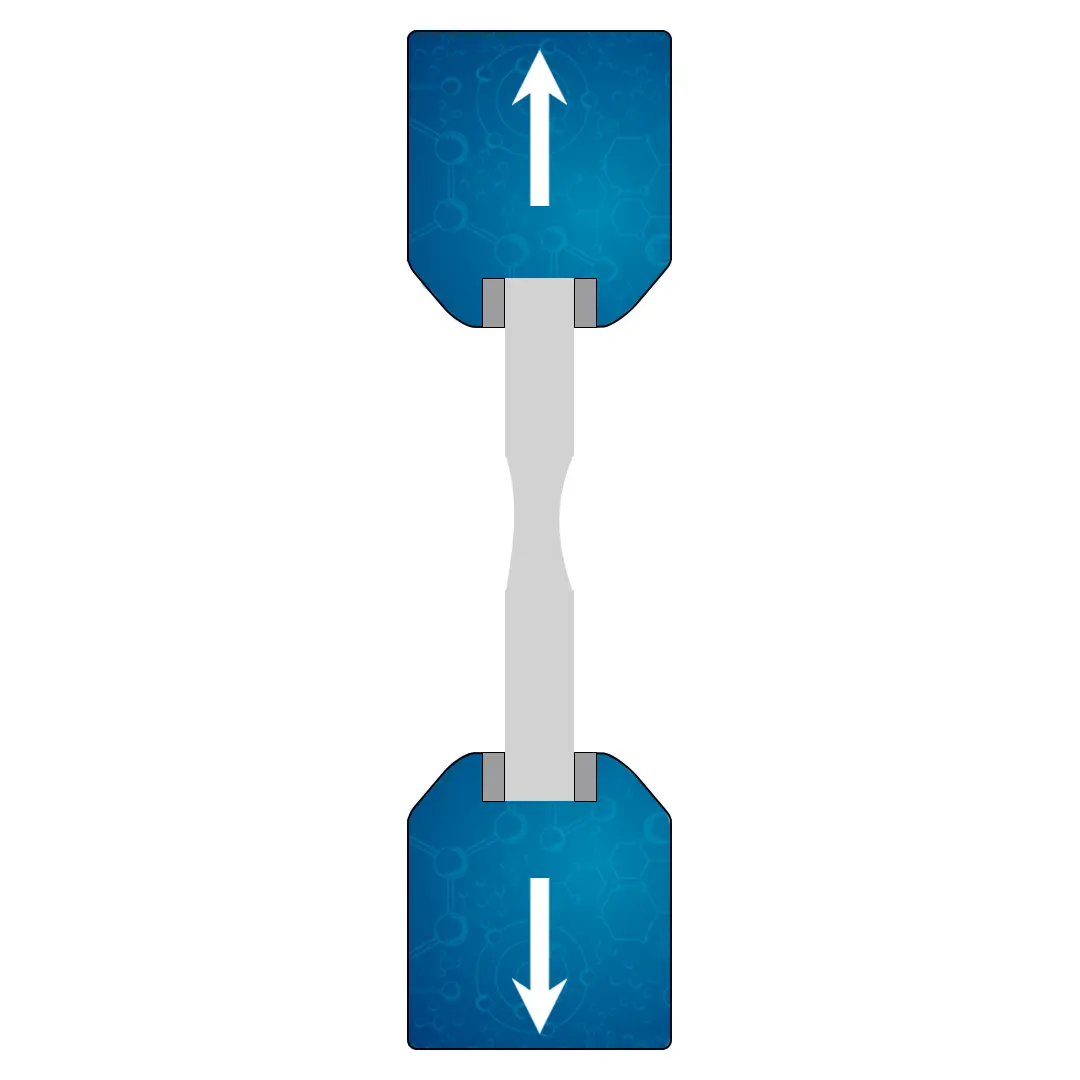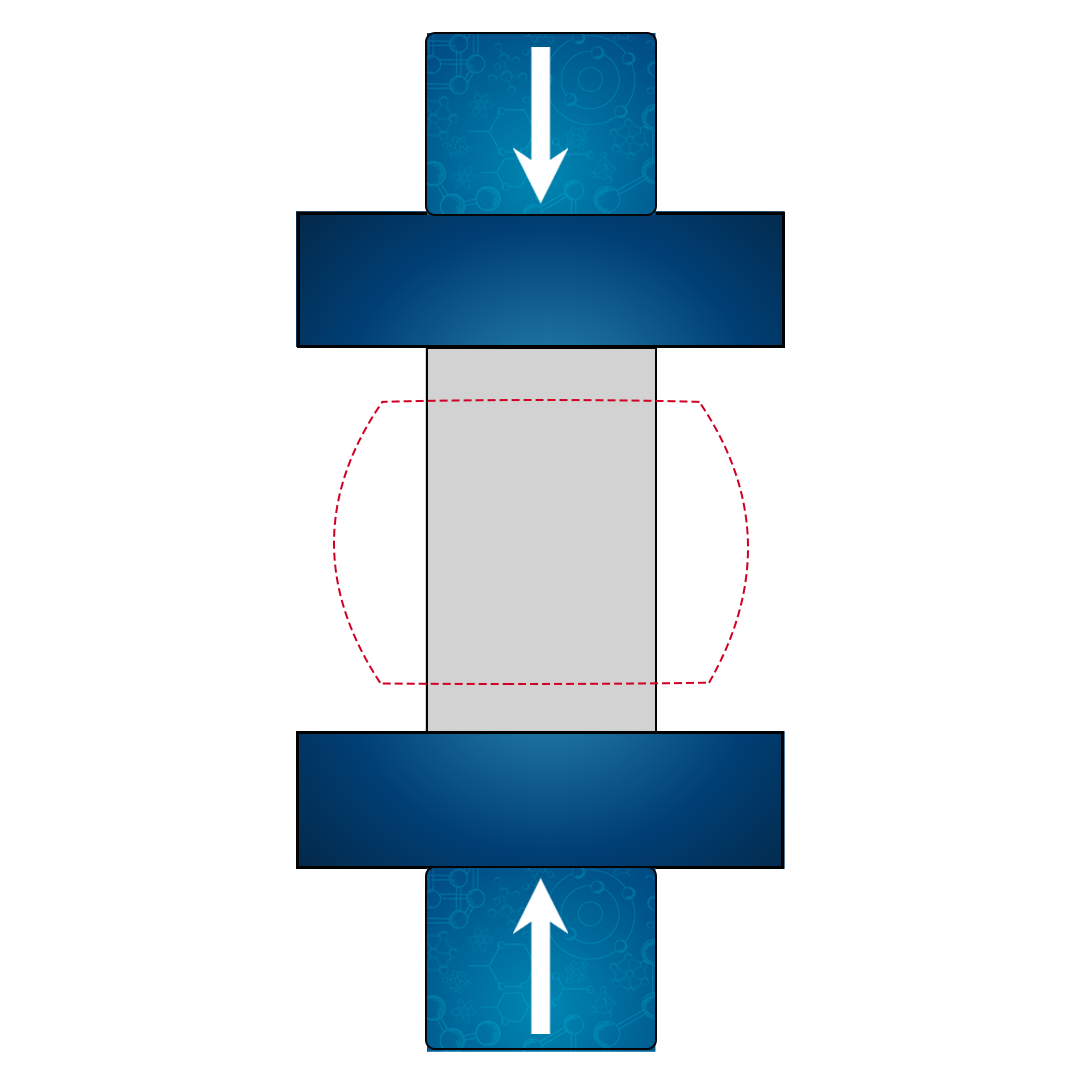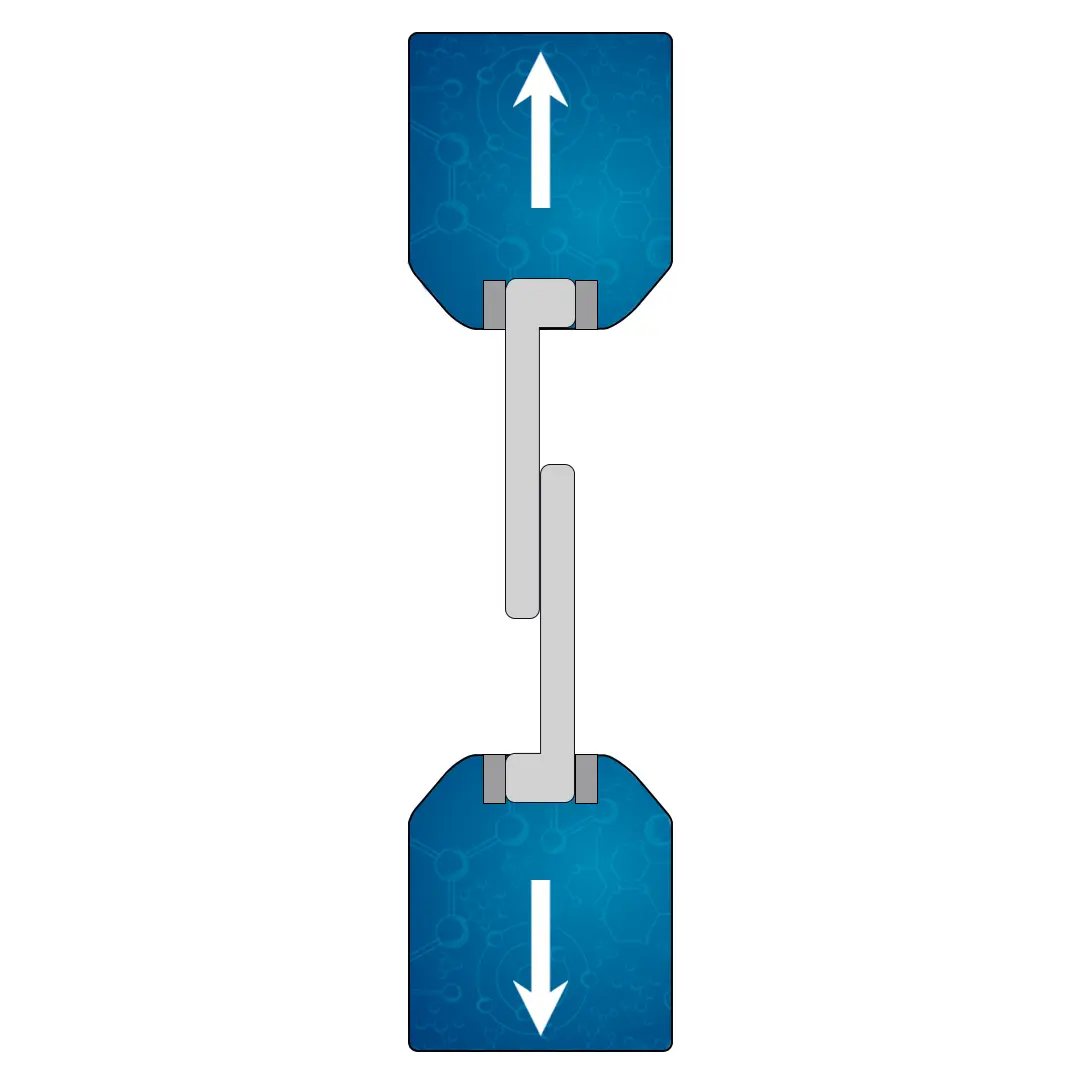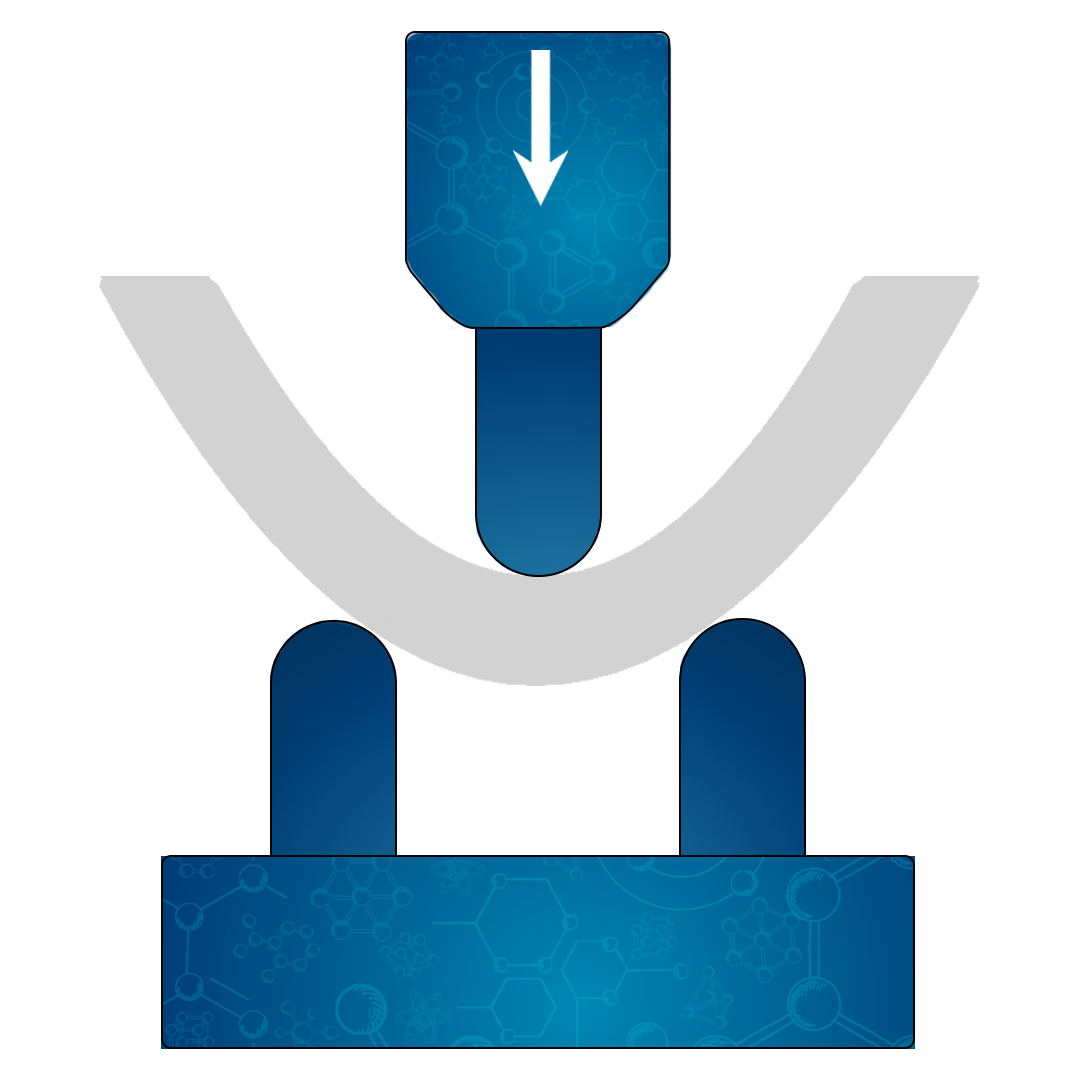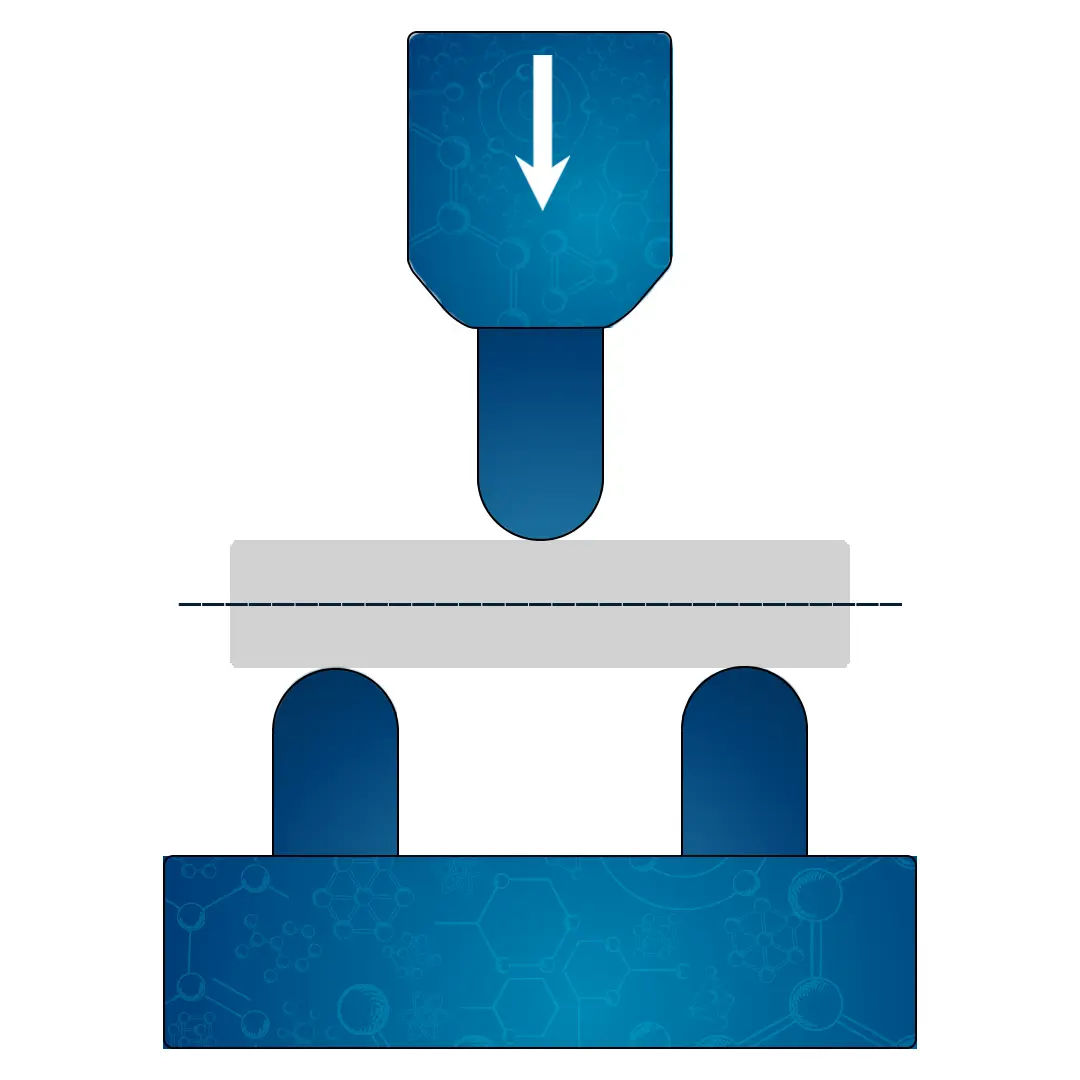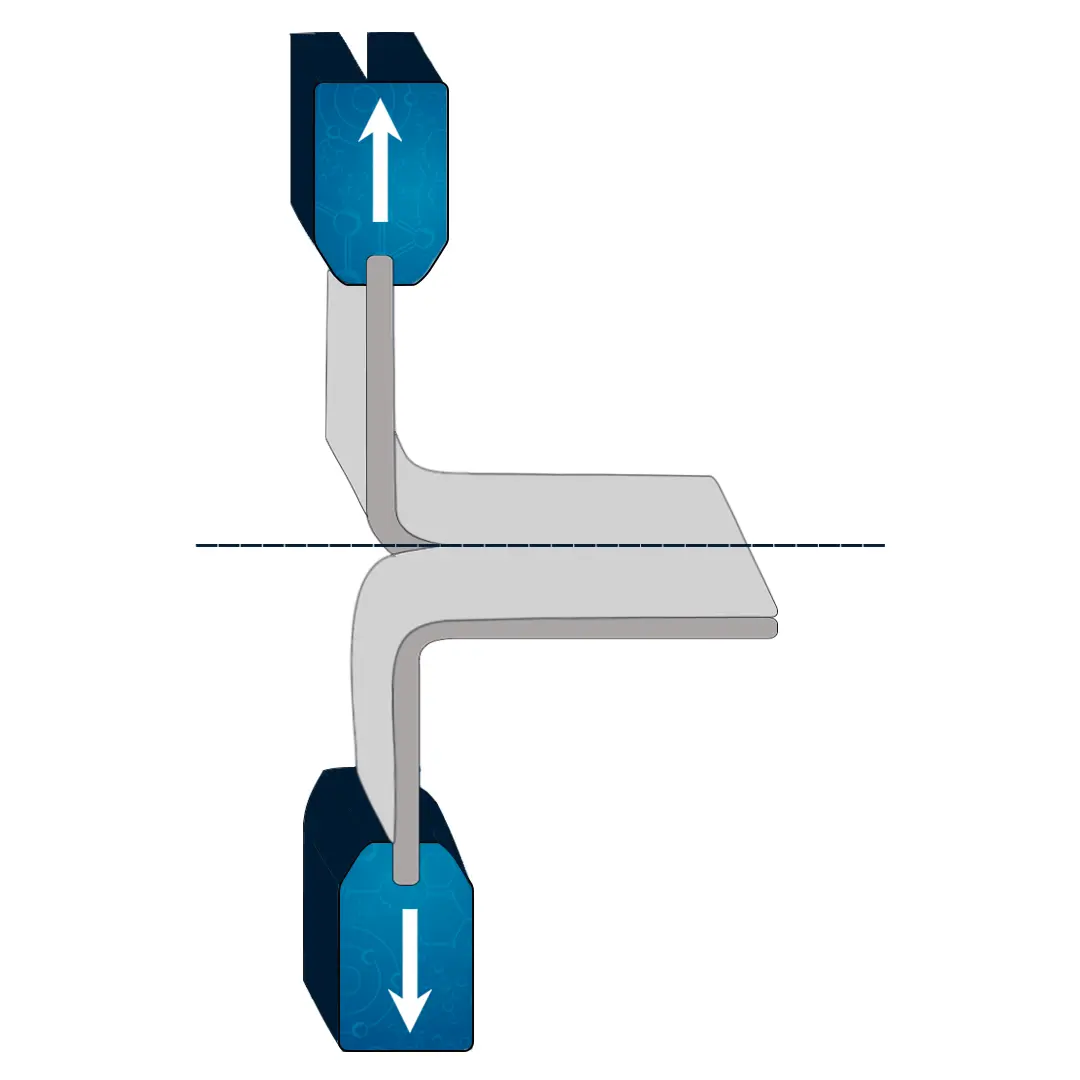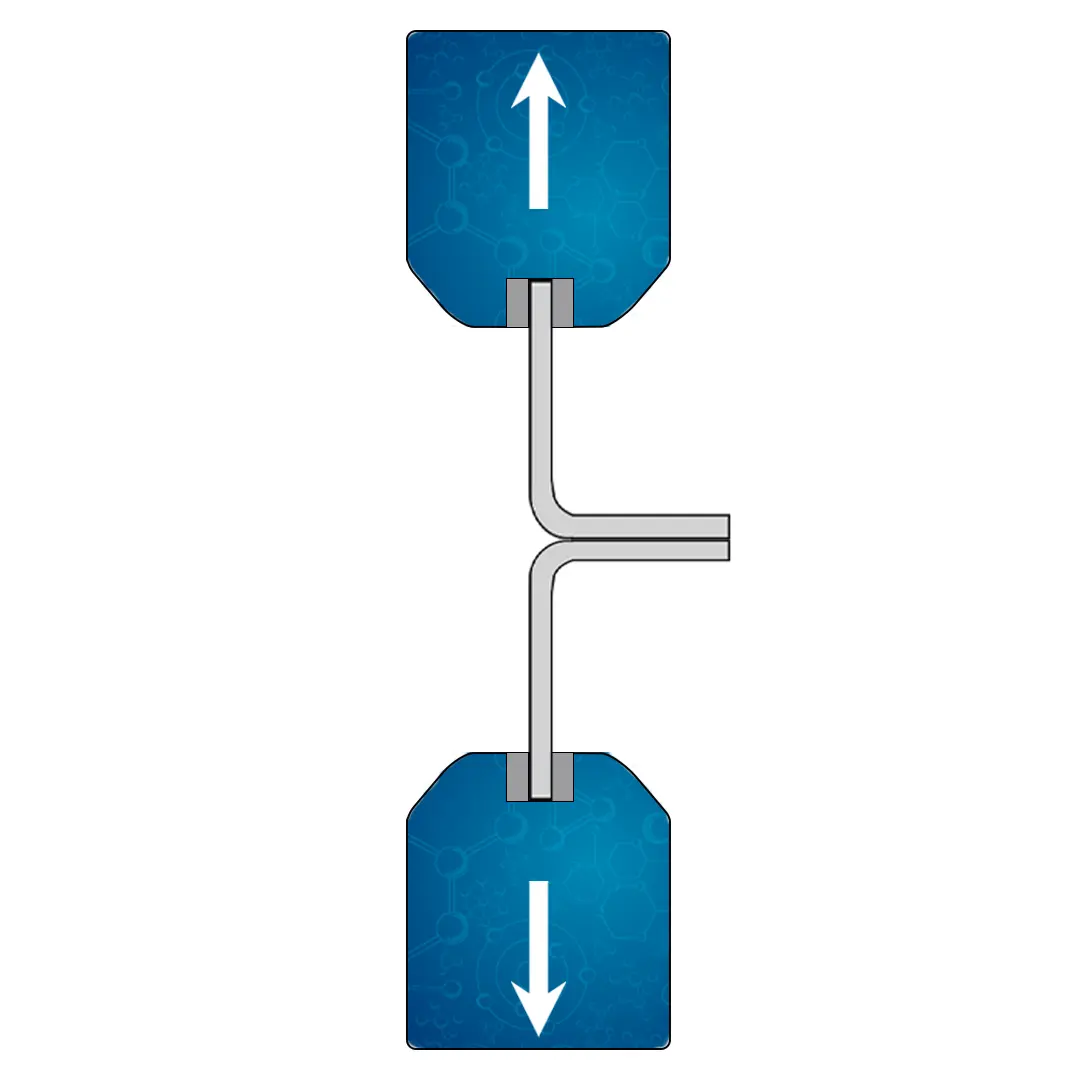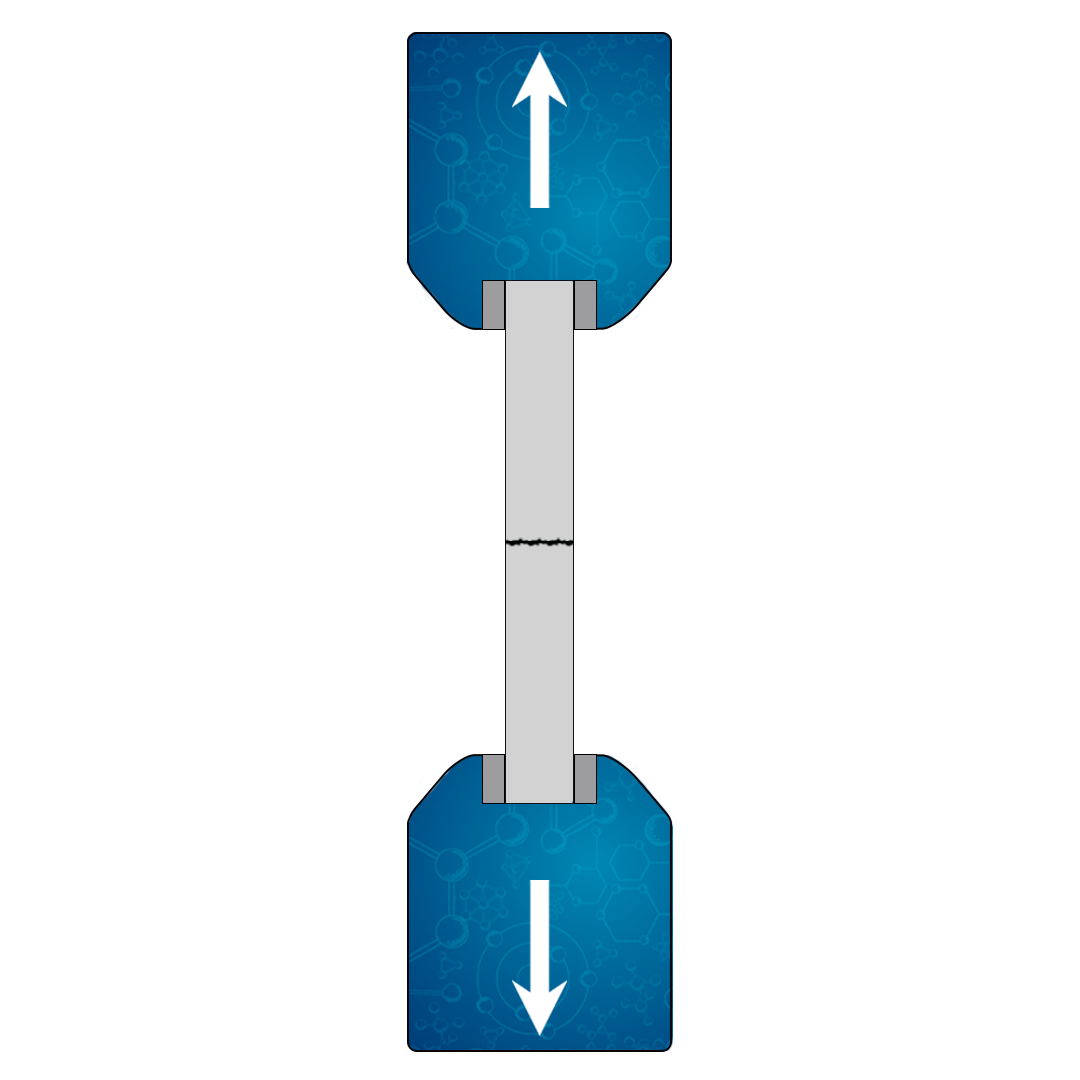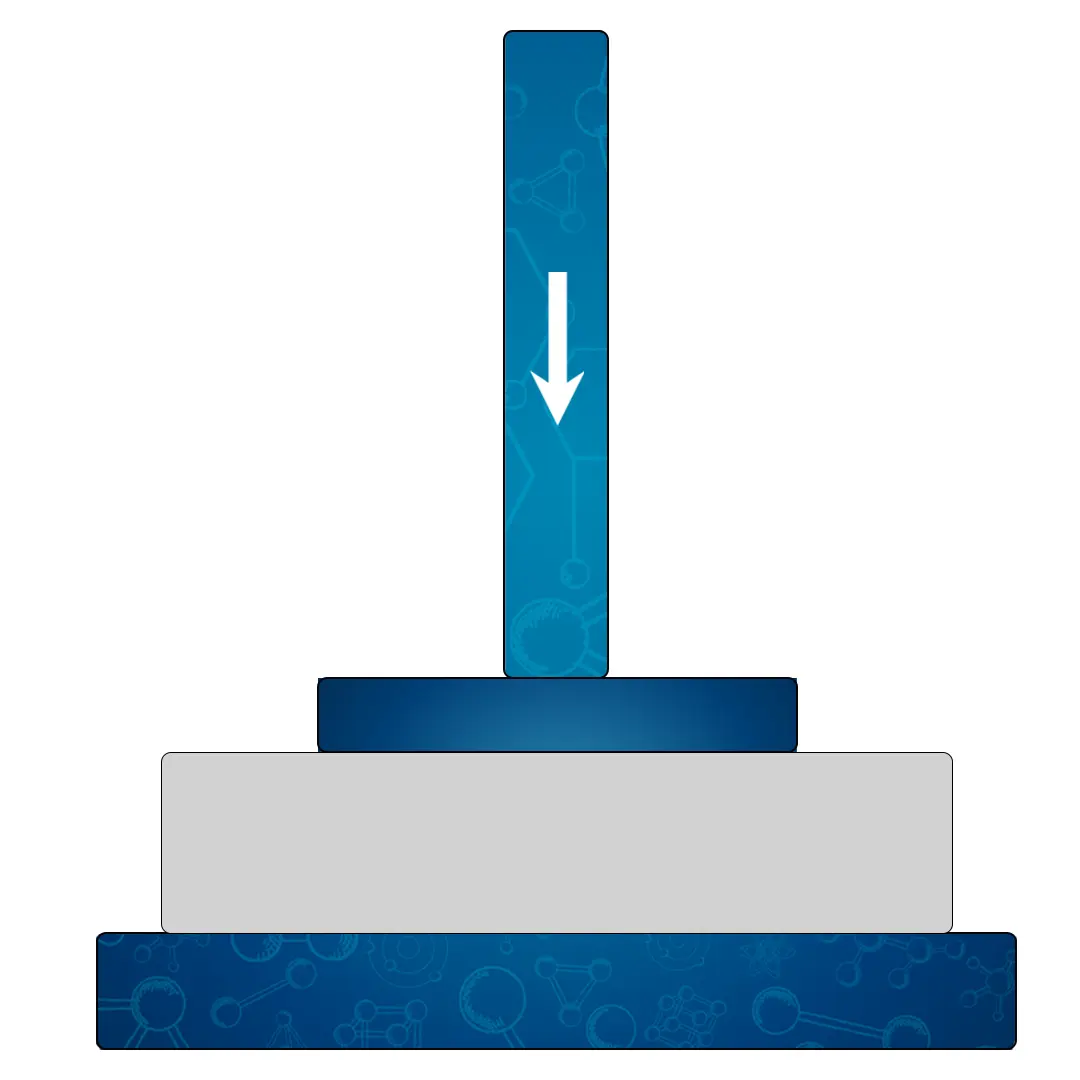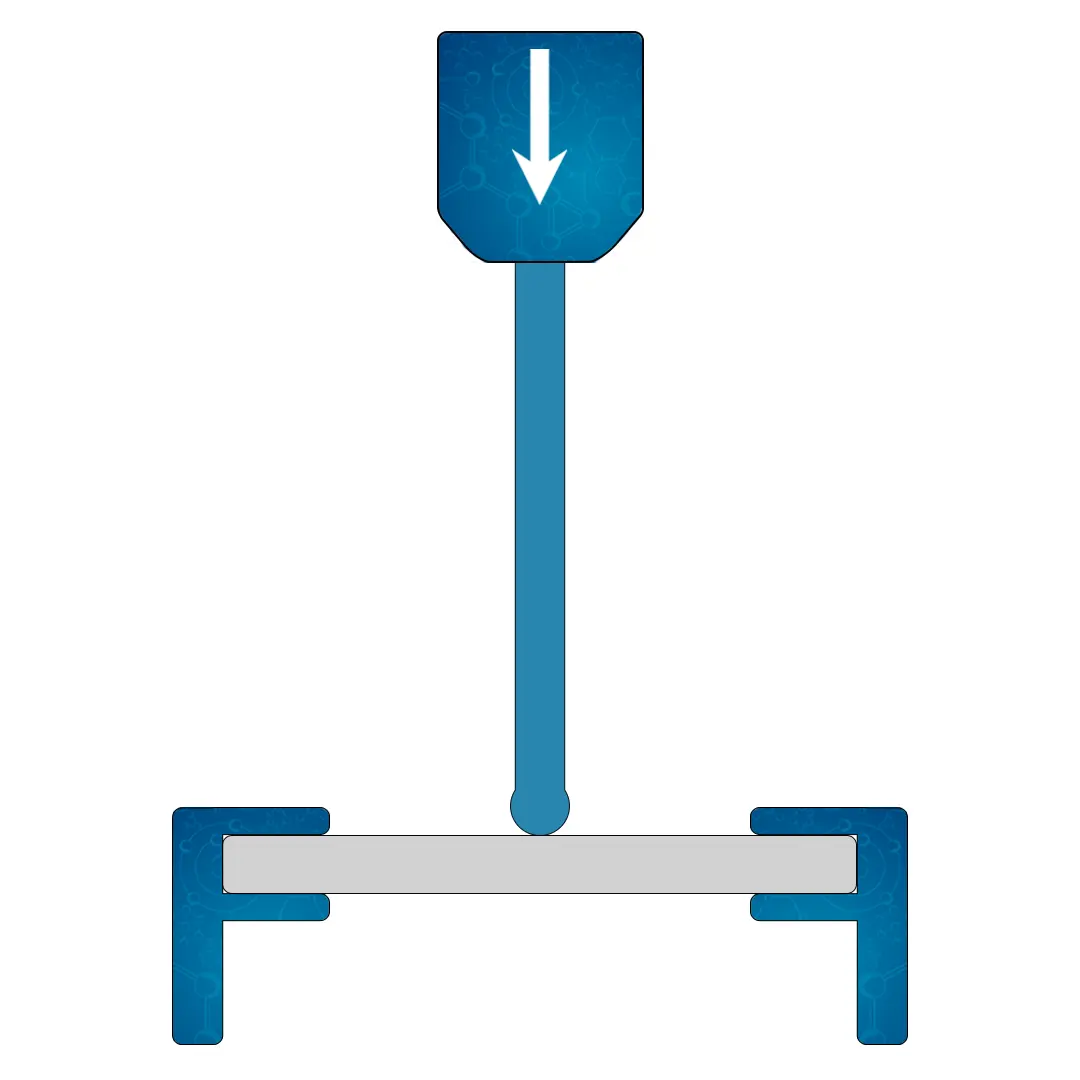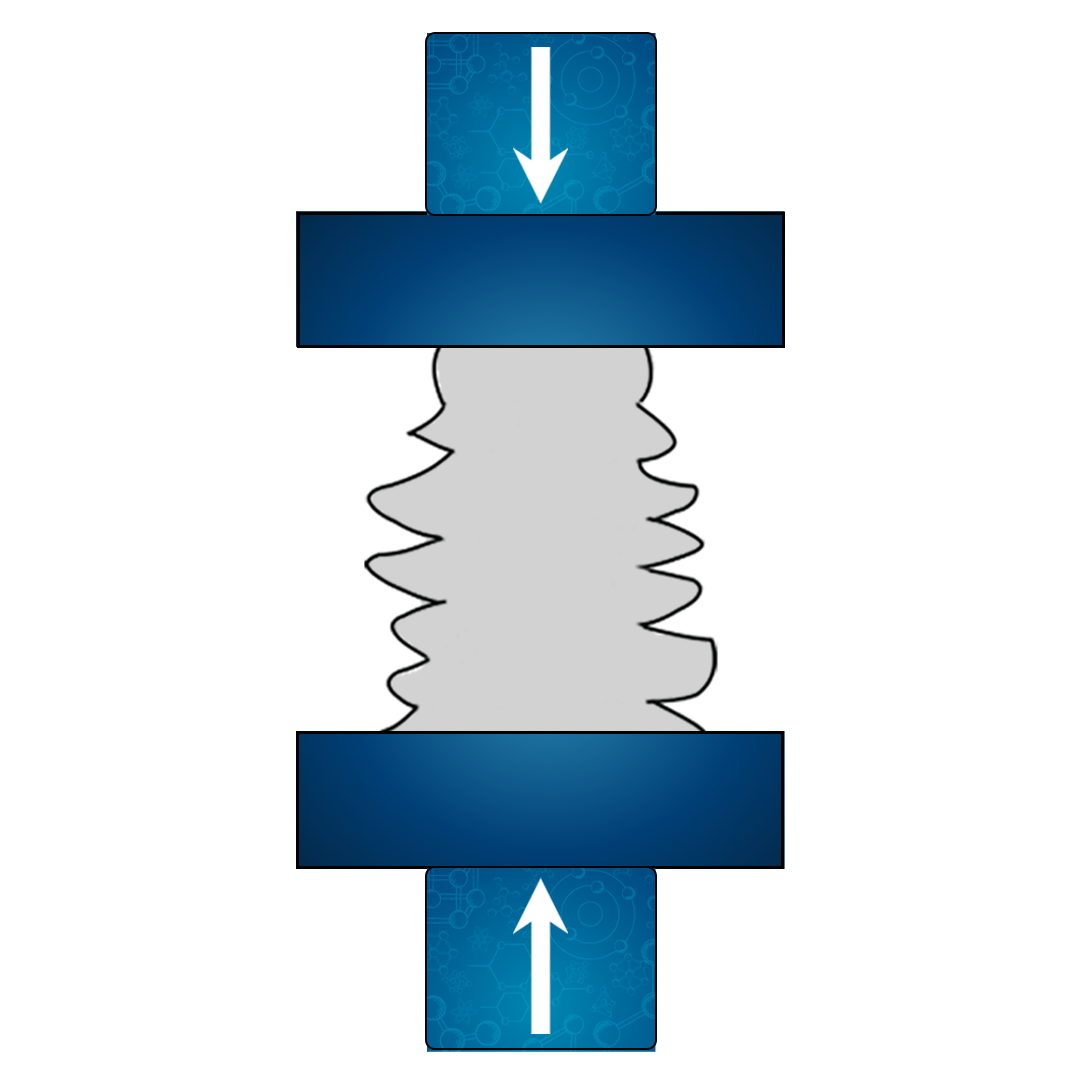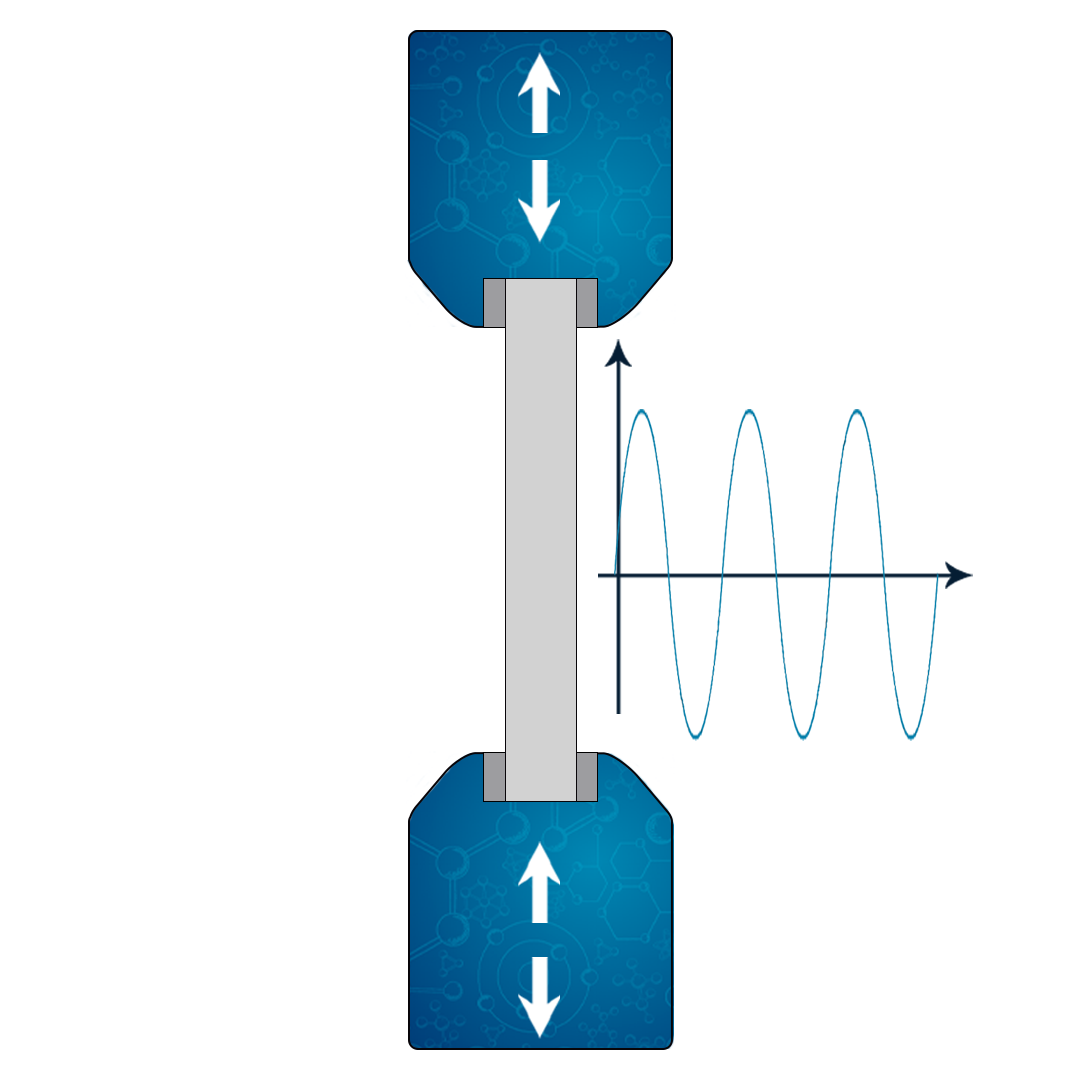Understanding Coefficient of Friction Testing: A Complete Guide
This guide provides a comprehensive overview of Coefficient of Friction Testing, offering valuable insights for anyone interested in material science, engineering, product design, and quality control.
Whether you’re a student, a professional, or simply curious about the subject, this guide is designed to deepen your understanding of CoF testing and its importance in our everyday lives.
In the following text, you will find a summary of the topics that will be addressed in this article.
What is Friction?
Friction is a fundamental concept in the field of engineering and material science. It is a force that resists the relative motion between two surfaces in contact. This resistance to motion occurs at the molecular level, where surface irregularities interact with each other.
There are two primary types of friction: static friction and kinetic (or dynamic) friction. Static friction is the force that keeps an object at rest and prevents it from moving, while kinetic friction is the force that resists the motion of an object.
Static friction is generally greater than kinetic friction. This is why more force is required to initiate movement (overcome static friction), but once an object is in motion, less force (kinetic friction) is needed to keep it moving.
Friction plays a crucial role in many everyday activities and engineering applications. For instance, it allows us to walk without slipping, enables vehicles to grip the road, and is involved in the functioning of various machinery.
In material science, understanding friction is key to developing materials with desired properties. For example, low friction materials like Teflon are used in non-stick cookware, while high friction materials are used in brake pads to effectively stop vehicles.
However, friction is not always beneficial. It can lead to energy losses in mechanical systems and cause wear and tear of materials over time. Therefore, engineers often seek ways to minimize friction in mechanical design.
What is the Coefficient of Friction?
The coefficient of friction is a dimensionless scalar value that quantifies the relationship between the force required to initiate or sustain the motion between two surfaces in contact and the normal force pressing them together. It provides a measure of the frictional resistance between the surfaces.
When two objects are in contact and one tries to move or slide against the other, the coefficient of friction determines the magnitude of the resisting force. It represents the ratio of the frictional force to the normal force acting between the surfaces.
There are two main types of coefficients of friction:
- Static Coefficient of Friction (μs): This coefficient represents the resistance to the initiation of motion between two stationary surfaces. It quantifies the force required to overcome static friction and set an object in motion. The static coefficient of friction is typically greater than the kinetic coefficient of friction for the same surfaces.
- Kinetic (or Dynamic) Coefficient of Friction (μk): This coefficient describes the resistance to motion between two surfaces when they are already in relative motion. It represents the frictional force acting on an object as it moves across a surface. The kinetic coefficient of friction is generally lower than the static coefficient of friction for the same surfaces.
The coefficient of friction is usually represented by the Greek letter μ (mu). It is calculated by dividing the force of friction (Ff) by the normal force (Fn), which is the force pressing the two surfaces together. The formula is as follows:
μ = Ff / Fn
The coefficient of friction depends on various factors, including the nature and roughness of the surfaces in contact, the presence of lubricants, and the materials involved. It is typically determined experimentally for specific material combinations using techniques like inclined planes or friction test apparatus.
Understanding the coefficient of friction is crucial in many fields, including engineering, material science, physics, and industrial applications. It helps in designing mechanisms, determining the required force for motion, and ensuring the stability and safety of various systems.
What is Coefficient of Friction Testing?
Coefficient of Friction Testing is a critical procedure in the field of engineering and material science. It is a method used to measure the frictional characteristics between two surfaces, providing valuable data that can influence the design, safety, and functionality of a product or material.
The CoF testing process involves applying a known load to two materials and measuring the force required to initiate or maintain motion. The test can be performed under different conditions, such as varying temperature, pressure, or humidity, to simulate real-world applications.
There are two primary types of CoF tests: static and kinetic. The static CoF test measures the force required to initiate movement (overcoming static friction), while the kinetic CoF test measures the force needed to maintain motion (overcoming kinetic friction).
The testing equipment typically consists of a sled fixture, which is loaded with a weight and dragged across the test material. The force required to move the sled is measured and used to calculate the CoF. The lower the CoF, the less friction there is between the two surfaces.
CoF testing is crucial in many industries. For example, in packaging, it’s used to determine the slipperiness of packaging materials, which can affect how products are stacked and transported. In automotive engineering, it’s used to assess tire performance on various road surfaces. In construction, it’s used to evaluate the slip resistance of flooring materials.
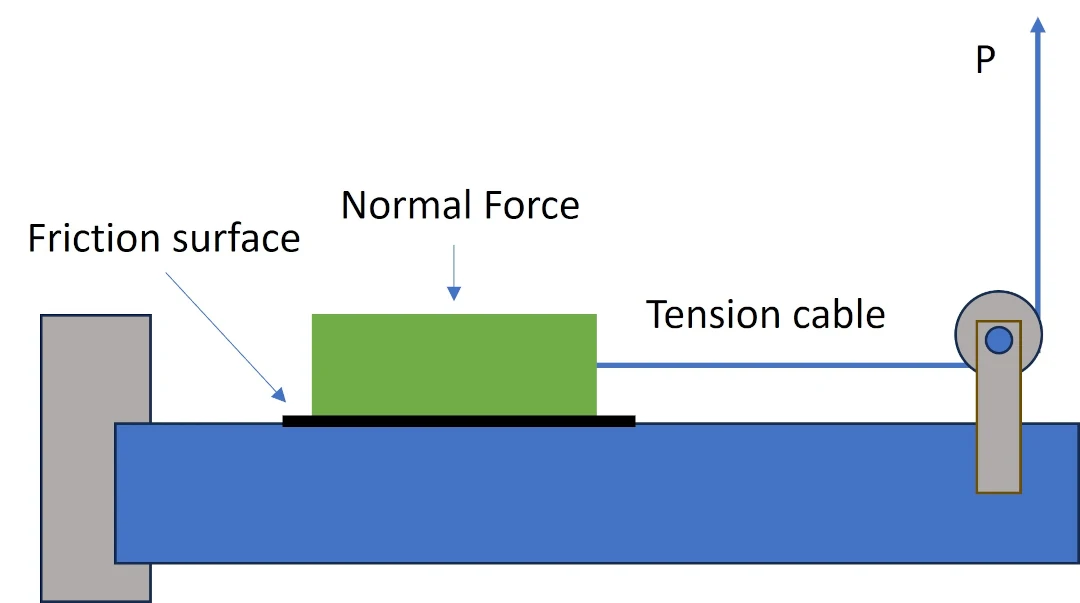
The Importance of Coefficient of Friction Testing
The Coefficient of Friction (CoF) testing is a vital process in various industries, playing a significant role in ensuring safety, efficiency, and optimal performance of products and materials. Here’s why CoF testing is so important:
- Safety: CoF testing helps determine the slip resistance of surfaces, which is crucial in preventing accidents. For instance, in the construction industry, flooring materials are tested to ensure they are safe to walk on, even when wet. Similarly, in the automotive industry, tire materials are tested to ensure they provide adequate grip on different road surfaces.
- Product Performance: The CoF can significantly impact the functionality and performance of a product. For example, in packaging, a high CoF might lead to difficulties in machine processing of materials, while a low CoF might cause stability issues during transport. CoF testing ensures the materials used are suitable for their intended application.
- Material Selection and Design: CoF testing provides valuable data that can guide the selection of materials for specific applications. For instance, low friction materials might be preferred for bearings to reduce wear and tear, while high friction materials might be chosen for brake pads to ensure effective stopping.
- Quality Control: Regular CoF testing can be part of a quality control process, ensuring that the frictional properties of materials remain consistent in different production batches. This consistency is vital in industries such as pharmaceuticals, food, and electronics, where variations in packaging materials can impact machine processing speed and product stability.
- Research and Development: In material science, CoF testing is a valuable tool in the development of new materials. By understanding the frictional properties of different materials, scientists can engineer materials with tailored properties to meet specific needs.
CoF testing is a critical aspect of engineering and material science. It not only ensures the safety and performance of products but also drives innovation in material design and development.
Calculating the Coefficient of Friction Testing
Calculating the Coefficient of Friction (CoF) during a friction test involves several steps. Here’s a detailed guide on how to do it:
- Step 1: Set Up the Testing Equipment The testing equipment typically includes a sled fixture and a flat surface. The sled, loaded with a known weight, is made of the same material as the object that will be in contact with the test material in its intended application.
- Step 2: Perform the Test Drag the sled across the test material. The force required to move the sled is measured using a force gauge or similar instrument. This force is the force of friction (Ff).
- Step 3: Measure the Normal Force The normal force (Fn) is the force pressing the two surfaces together. In a CoF test, this is typically the weight of the sled. Ensure that the weight is measured accurately as it directly impacts the CoF calculation.
- Step 4: Calculate the CoF Divide the force of friction (Ff) by the normal force (Fn) to get the CoF (μ). The formula is as follows:
μ = Ff / Fn
For static CoF, use the maximum force required to initiate the movement. For kinetic CoF, use the average force required to maintain the movement.
Remember, the CoF is a dimensionless quantity, meaning it does not have units. The value of the CoF ranges between 0 (no friction) and 1 (high friction), but can occasionally be greater than 1 for certain material pairs.
By following these steps, you can accurately calculate the CoF during a friction test. This value is crucial in understanding the frictional characteristics of materials, informing decisions about material selection and design in various applications.
Advantages of Using Coefficient of Friction Testing
The Coefficient of Friction (CoF) testing offers numerous advantages in various fields, particularly in engineering and material science. Here are some of the key benefits:
- Safety Assurance: CoF testing is crucial in ensuring safety. By determining the frictional properties of materials, it helps prevent accidents caused by slipping or skidding. For instance, in the construction industry, it’s used to test the slip resistance of flooring materials. In the automotive industry, it’s used to assess tire performance on various road surfaces.
- Improved Product Performance: The CoF can significantly impact the functionality and performance of a product. CoF testing allows engineers to optimize the frictional properties of materials to enhance product performance. For example, in packaging, the right CoF can ensure smooth machine processing and stable stacking during transport.
- Informed Material Selection and Design: CoF testing provides valuable data that can guide the selection of materials for specific applications. It informs the design process, allowing engineers to choose materials with the desired frictional properties for their applications.
- Quality Control: Regular CoF testing can be part of a quality control process, ensuring that the frictional properties of materials remain consistent in different production batches. This consistency is vital in industries such as pharmaceuticals, food, and electronics, where variations in packaging materials can impact machine processing speed and product stability.
- Facilitates Research and Development: CoF testing is a valuable tool in the development of new materials. By understanding the frictional properties of different materials, scientists can engineer materials with tailored properties to meet specific needs.
CoF testing is an essential tool that offers numerous advantages. It not only ensures safety and enhances product performance but also drives innovation in material design and development.
Properties Obtained by Coefficient of Friction Testing
Coefficient of Friction (CoF) testing provides valuable insights into the frictional properties of materials. Here are the key properties obtained through CoF testing:
- Static Coefficient of Friction (μs): This is the frictional force that resists the initiation of motion. It’s the maximum friction existing between two static (non-moving) surfaces. A higher static CoF means more force is required to start the motion.
- Kinetic (or Dynamic) Coefficient of Friction (μk): This is the frictional force that resists ongoing motion. It’s the friction between two surfaces when one is sliding or moving over the other. Typically, the kinetic CoF is less than the static CoF.
- Slipperiness: The CoF is a measure of slipperiness or grip between two surfaces. A lower CoF indicates a higher degree of slipperiness, while a higher CoF indicates a greater level of grip. This property is particularly important in applications such as flooring, packaging, and automotive design.
- Wear Resistance: Although not directly measured by CoF testing, the frictional properties obtained can provide insights into a material’s wear resistance. Materials with a high CoF often exhibit higher wear rates, as more friction can lead to increased material degradation.
- Material Compatibility: CoF testing can help determine the compatibility of two materials in contact. It can guide the selection of material pairs in various applications, such as mechanical parts, to ensure optimal performance and longevity.
CoF testing provides critical data on the frictional properties of materials. These properties are essential in understanding material interactions and are invaluable in material selection, design, and quality control across various industries.
Coefficient of friction in materials
The Coefficient of Friction (CoF) for metallic, polymer, ceramic and composite materials can vary widely depending on the specific contact, the surface finish, and whether any lubrication is used. Here are some approximate values for common material-on-material pairs without lubrication:
Metallic materials
- Steel on Steel: The CoF can range from 0.1 (with lubrication) to as high as 0.6 (without lubrication).
- Aluminum on Aluminum: The CoF is typically around 1.35 without lubrication.
- Copper on Steel: The CoF is approximately 0.53 without lubrication.
- Brass on Steel: The CoF is around 0.35 without lubrication.
- Titanium on Titanium: The CoF can be as high as 0.6 without lubrication.
- Stainless Steel on Stainless Steel: The CoF can range from 0.4 (with lubrication) to 0.8 (without lubrication).
Polymer materials
- Polyethylene on Polyethylene: The CoF is typically around 0.2 without lubrication.
- Polypropylene on Polypropylene: The CoF is approximately 0.3 without lubrication.
- Polystyrene on Polystyrene: The CoF is around 0.5 without lubrication.
- Polyvinyl Chloride (PVC) on PVC: The CoF is approximately 0.4 without lubrication.
- Polytetrafluoroethylene (PTFE, often known by the brand name Teflon) on PTFE: The CoF is very low, typically around 0.04 to 0.1, which is why it’s often used as a non-stick coating.
- Polyamide (Nylon) on Polyamide: The CoF is approximately 0.15 to 0.35 without lubrication.
Ceramic materials
- Alumina (Aluminum Oxide) on Alumina: The CoF is typically around 0.6 without lubrication.
- Silicon Carbide on Silicon Carbide: The CoF is approximately 0.4 without lubrication.
- Zirconia (Zirconium Dioxide) on Zirconia: The CoF is around 0.7 without lubrication.
- Silicon Nitride on Silicon Nitride: The CoF is approximately 0.5 without lubrication.
Composite materials
- Carbon Fiber Reinforced Polymer (CFRP) on CFRP: The CoF can range from 0.3 to 0.6 without lubrication.
- Glass Fiber Reinforced Polymer (GFRP) on GFRP: The CoF is typically around 0.2 to 0.4 without lubrication.
- Metal Matrix Composites (MMC) on MMC: The CoF can vary widely depending on the specific metal and reinforcement used, but it typically ranges from 0.2 to 0.6 without lubrication.
- Ceramic Matrix Composites (CMC) on CMC: The CoF can also vary widely depending on the specific ceramic and reinforcement used, but it typically ranges from 0.2 to 0.8 without lubrication.
Please note that these are approximate values and can vary based on factors such as surface finish, temperature, speed of sliding, and presence of any lubricant or coating. For precise values for specific applications, it’s recommended to conduct CoF testing under the actual conditions of use.
The Universal Testing Machine: A Key Instrument for Coefficient of Friction Testing
The Universal Testing Machine (UTM), also known as a Universal Tester, is a versatile piece of equipment used to test the mechanical properties of materials, including the Coefficient of Friction (CoF). Here’s a detailed look at how a UTM is used in CoF testing:
Structure and Components of a UTM
A UTM typically consists of:
- Load Frame: This is the main structure of the machine, which houses the other components and provides stability during testing.
- Test Fixtures: These are devices used to hold the test specimens. For CoF testing, a sled fixture is commonly used.
- Load Cell: This is a transducer that converts force into an electrical signal. It measures the force applied during the test.
- Crosshead: This is the part of the machine that moves up or down to apply force to the test specimen.
- Control System: This includes the software and hardware that control the operation of the machine and record the test data.
The Universal Testing Machine is a vital instrument in CoF testing. Its versatility and precision make it an invaluable tool in material testing, providing critical data that informs material selection, design, and quality control in various applications.
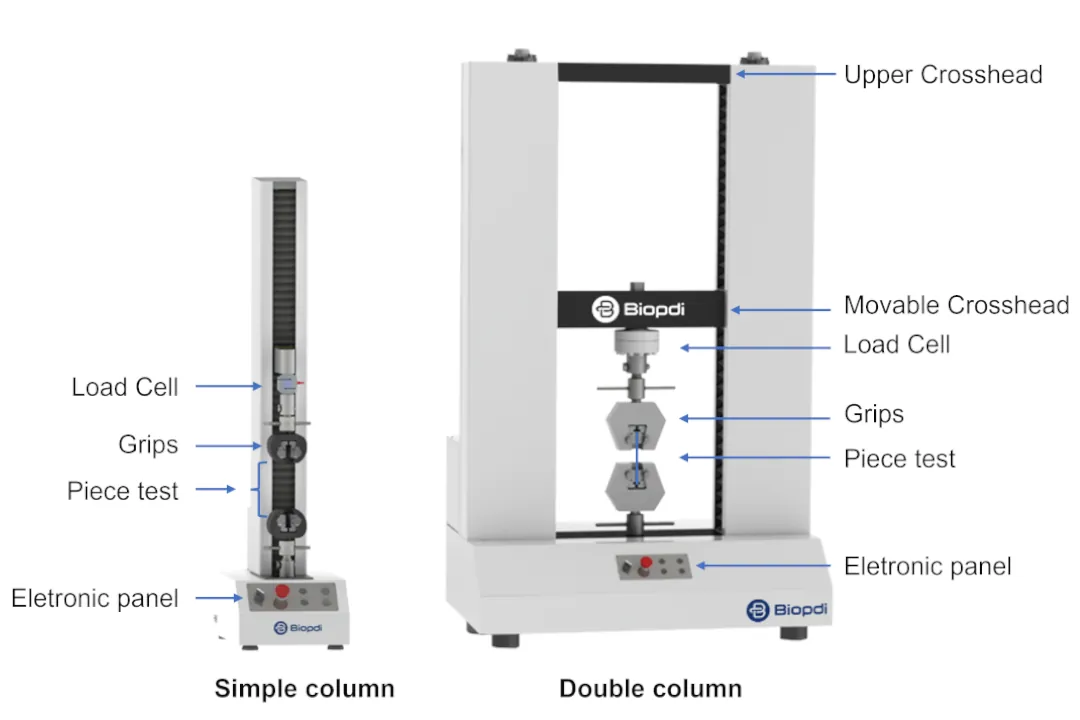
Procedures for Obtaining the Coefficient of Friction Using a Universal Testing Machine
The Universal Testing Machine (UTM) is a versatile instrument used in Coefficient of Friction (CoF) testing. Here’s a step-by-step guide on how to conduct a CoF test using a UTM:
- Step 1: Preparation of Test Specimens Choose the materials you want to test. The materials should be clean and free of any contaminants that could affect the results. If you’re testing a specific product, use the materials that make up that product.
- Step 2: Set Up the Testing Equipment The UTM typically includes a sled fixture and a flat surface. The sled, loaded with a known weight, is made of the same material as the object that will be in contact with the test material in its intended application.
- Step 3: Configure the UTM Set the test parameters on the UTM, such as the speed of the crosshead and the load applied. These parameters should be set according to the standard or specification you are following for the CoF test.
- Step 4: Perform the Test Start the UTM. The crosshead will move, dragging the sled across the test material. The force required to move the sled is measured by the load cell in the UTM.
- Step 5: Measure the Normal Force The normal force (Fn) is the force pressing the two surfaces together. In a CoF test, this is typically the weight of the sled. Ensure that the weight is measured accurately as it directly impacts the CoF calculation.
- Step 6: Calculate the CoF Divide the force of friction (Ff) by the normal force (Fn) to get the CoF (μ). For static CoF, use the maximum force required to initiate the movement. For kinetic CoF, use the average force required to maintain the movement. The formula is as follows:
μ = Ff / Fn
- Step 7: Record and Analyze the Results Record the CoF values and analyze them in the context of your specific application. Consider factors such as the materials used, the conditions under which the test was performed, and the specific requirements of your application.
By following these steps, you can accurately conduct a CoF test using a Universal Testing Machine and obtain valuable data on the frictional properties of materials. This information can guide material selection, design, and quality control in various applications.
Data Obtained from Coefficient of Friction Testing Using a Universal Testing Machine
When conducting a Coefficient of Friction (CoF) test using a Universal Testing Machine (UTM), several key pieces of data are obtained:
- Force of Friction (Ff): This is the force required to move the sled across the test material. It’s measured directly by the load cell in the UTM during the test.
- Normal Force (Fn): This is the force pressing the two surfaces together. In a CoF test, this is typically the weight of the sled.
- Static Coefficient of Friction (μs): This is calculated from the maximum force required to initiate movement. It’s obtained by dividing the maximum force of friction by the normal force (μs = Ff_max / Fn).
- Kinetic Coefficient of Friction (μk): This is calculated from the average force required to maintain movement. It’s obtained by dividing the average force of friction by the normal force (μk = Ff_avg / Fn).
- Test Parameters: The UTM records the test parameters, such as the speed of the crosshead and the load applied. These parameters are important for interpreting the results and ensuring the test is repeatable.
- Time-Force Data: The UTM typically records the force data throughout the test, providing a time-force plot. This plot can give insights into the behavior of the materials under test, such as any changes in friction over time.
CoF testing using a UTM provides a wealth of data on the frictional properties of materials. This data is invaluable in material selection, design, and quality control in various applications.
Specimen Selection for Coefficient of Friction Testing in a Universal Testing Machine
The specimen used in a Coefficient of Friction (CoF) test using a Universal Testing Machine (UTM) is typically a sample of the material or product that you want to test. The choice of specimen is crucial as it directly impacts the relevance and applicability of the test results. Here’s what you need to know about specimen selection:
- Material: The specimen should be made of the same material as the object that will be in contact with the test material in its intended application. For example, if you’re testing the CoF between a tire and a road surface, you would use a specimen made of the same material as the tire.
- Size and Shape: The specimen should be of a size and shape that fits the testing equipment. In a UTM, a common setup involves a sled fixture, so the specimen is often a flat piece that can be attached to the sled. The size and shape of the specimen can also depend on the specific standard or specification you are following for the CoF test.
- Surface Finish: The surface finish of the specimen should match that of the actual product as closely as possible, as the surface finish can significantly affect the CoF. For example, a rough surface can have a higher CoF than a smooth surface.
- Preparation: The specimen should be clean and free of any contaminants that could affect the test results. Any necessary preparation, such as applying a specific surface finish or conditioning the specimen to a certain temperature or humidity, should be done before the test.
The choice of specimen is a critical aspect of CoF testing using a UTM. By carefully selecting and preparing the specimen, you can ensure that the test results accurately reflect the frictional properties of the materials in their intended application.
Main ISO and ASTM Standards for Coefficient of Friction Testing
Several international standards guide the procedures for Coefficient of Friction (CoF) testing. Here are 12 key ISO (International Organization for Standardization) and ASTM (American Society for Testing and Materials) standards:
ISO Standards
- ISO 8295: This standard specifies a method for determining the static and kinetic CoF of plastic film and sheeting.
- ISO 15359: This standard is used for testing the CoF of paper and board.
- ISO 10565: This standard is used for testing the CoF of rigid cellular plastics.
- ISO 18571: This standard specifies a method for determining the CoF of ceramic tiles.
- ISO 7641: This standard is used for testing the CoF of anodized aluminum.
- ISO 20808: This standard specifies a method for determining the CoF of packaging and transport packages.
ASTM Standards
- ASTM D1894: This standard test method is used for static and kinetic CoFs of plastic film and sheeting.
- ASTM G115: This standard guide is used for measuring and reporting the CoF in tribology.
- ASTM D4918: This standard test Method for coefficient of Static Friction of Uncoated Writing and Printing Paper.
- ASTM D6182: This standard test method is used for flexural ring-on-ring CoF of plastic materials.
- ASTM D3108: This standard test method is used for CoF of yarns.
- ASTM D3412: This standard test method is used for CoF of leather.
These standards provide detailed procedures for CoF testing, ensuring that the tests are conducted accurately and consistently. They cover a wide range of materials, from plastics and ceramics to yarns and leather, reflecting the broad applicability of CoF testing in material science and engineering.
Applications of Coefficient of Friction Testing
The Coefficient of Friction (CoF) is a crucial factor in many engineering and design applications. Here are four main applications where CoF testing plays a pivotal role:
- Material Selection and Design: CoF testing is integral to the material selection process in various industries. By understanding the frictional properties of different materials, engineers can choose the most suitable materials for specific applications. For instance, in mechanical engineering, low friction materials can be selected for parts that need to slide against each other, reducing wear and improving efficiency.
- Safety Assessments: CoF testing is crucial in assessing the safety of products. For example, in the construction industry, it’s used to test the slip resistance of flooring materials. Similarly, in the automotive industry, tire manufacturers use CoF testing to evaluate tire performance on various road surfaces under different conditions.
- Quality Control: CoF testing is often used as a quality control measure in manufacturing. For instance, in the packaging industry, it’s used to ensure that packaging materials have the appropriate level of friction to prevent slippage during handling and transport.
- Research and Development: CoF testing is a valuable tool in the development of new materials and products. By understanding the frictional properties of materials, scientists and engineers can develop innovative solutions to engineering challenges. For example, in the field of biomedical engineering, CoF testing is used in the design and development of medical implants and prosthetics.
CoF testing is a versatile tool with wide-ranging applications. It plays a crucial role in ensuring the safety, performance, and quality of products across various industries.
Additional Information
Coefficient of Friction (CoF) testing is a critical aspect of material science and engineering, providing key insights into the frictional properties of materials. Here are some additional points to consider:
- Factors Affecting CoF: Several factors can influence the CoF, including the materials in contact, surface finish, temperature, speed of sliding, and the presence of any lubricant or coating. Therefore, it’s important to control these factors during testing to ensure accurate and repeatable results.
- Limitations of CoF Testing: While CoF testing provides valuable data, it has some limitations. The CoF is a macroscopic property that averages the effects of many microscopic interactions, so it may not fully capture the complexity of frictional behavior. Additionally, real-world conditions can be difficult to replicate in a laboratory setting.
- Variations in CoF Testing Methods: There are various methods for CoF testing, each with its own advantages and disadvantages. Some methods are better suited for certain types of materials or applications. For example, the pin-on-disk method is commonly used for metals, while the sled method is often used for plastics and packaging materials.
- Importance of Standards: CoF testing should be conducted according to recognized standards, such as those from ISO or ASTM. These standards provide detailed procedures to ensure that the tests are accurate, consistent, and comparable across different labs and materials.
- Interpretation of Results: The results of CoF testing should be interpreted in the context of the specific application. A high CoF can be desirable in some cases (e.g., for slip resistance in flooring) and undesirable in others (e.g., for reducing wear in mechanical parts).
CoF testing is a complex process that requires careful planning, execution, and interpretation. By understanding the nuances of CoF testing, you can make informed decisions about material selection, design, and quality control in your applications.
Conclusion
Throughout this comprehensive guide, we have explored the multifaceted world of Coefficient of Friction (CoF) testing. From the fundamental understanding of friction and CoF to the intricate procedures of conducting CoF tests using a Universal Testing Machine (UTM), we have delved into the complexities and nuances that make this field of study both challenging and fascinating.
We have seen how CoF testing plays a pivotal role in various industries, aiding in material selection, design, safety assessments, and quality control. The importance of adhering to international standards like ISO and ASTM in conducting these tests has been emphasized, ensuring accuracy, consistency, and comparability of results.
The guide also highlighted the CoF values for different types of materials, including metallic, polymer, ceramic, and composite materials, demonstrating the wide-ranging applicability of CoF testing. The role of the UTM, a key instrument in CoF testing, was explored in detail, providing insights into its operation and the valuable data it provides.
In conclusion, CoF testing is a critical aspect of material science and engineering. It provides invaluable data that informs decisions about material selection, product design, and quality control, ultimately contributing to the creation of safer, more efficient, and more durable products. As we continue to innovate and push the boundaries of technology, the importance of understanding and accurately measuring the CoF will only continue to grow.
FAQ (Frequently Asked Questions)
What is friction testing?
Friction testing is a process used to measure the resistance to motion of one object moving relative to another. It involves determining the Coefficient of Friction (CoF), which quantifies the frictional interaction between two surfaces.
How do you perform a friction test?
A friction test is typically performed using a device like a Universal Testing Machine (UTM). The test involves dragging a weighted sled (made of the same material as the object in its intended application) across a test material and measuring the force required to move the sled. The CoF is then calculated by dividing this force by the weight of the sled.
What is friction testing of materials?
Friction testing of materials involves determining the CoF between two specific materials. This information is crucial in various industries for material selection, design, safety assessments, and quality control.
What is ASTM standard for friction testing?
Several ASTM standards guide friction testing, including ASTM D1894 for plastic film and sheeting, ASTM G115 for measuring and reporting CoF in tribology, and ASTM D3412 for CoF of leather.
What is the difference between ASTM D638 and ASTM D882?
ASTM D638 and ASTM D882 are both standards for testing the mechanical properties of plastics, but they apply to different forms of plastic. ASTM D638 is used for testing the tensile properties of molded plastic specimens, while ASTM D882 is used for testing thin plastic sheeting and film.
What is the ASTM test for coefficient of friction?
ASTM D1894 is a standard test method for determining the static and kinetic CoF of plastic film and sheeting using a UTM.
What is the COF testing method?
The CoF testing method involves dragging a weighted sled across a test material and measuring the force required to move the sled. The CoF is then calculated by dividing this force by the weight of the sled.
How do you determine the coefficient of friction experimentally?
The CoF is determined experimentally by performing a friction test, which involves dragging a weighted sled across a test material and measuring the force required to move the sled. The CoF is then calculated by dividing this force by the weight of the sled.
What is the purpose of coefficient of friction test?
The purpose of a CoF test is to determine the frictional properties of materials. This information is crucial in various industries for material selection, design, safety assessments, and quality control.
What is COF value?
The CoF value is a dimensionless scalar that describes the ratio of the force of friction between two bodies to the force pressing them together. It quantifies the frictional interaction between two surfaces.
How accurate is the coefficient of friction?
The accuracy of the CoF depends on several factors, including the precision of the testing equipment, the control of testing conditions, and the adherence to testing standards. When these factors are properly controlled, CoF testing can provide highly accurate and reliable data.
See more relevant posts
TENSILE TEST
Tensile testing is a crucial mechanical test used to evaluate the strength and ductility of materials. It involves applying a controlled force. See more
COMPRESSION TEST
Compression testing is a fundamental evaluation method employed to assess a material's ability to withstand compressive forces. See more
SHEAR TEST
Shear testing examines a material's response to forces acting parallel to its surface. By applying a force that causes one part of the material. See more
BEND TEST
Bend testing is a mechanical test that determines a material's flexibility and resistance to fracture under bending forces. See more
FLEXURAL TEST
Flexural testing, also known as the three-point bend test, is employed to measure a material's resistance to bending or flexural stress. See more
FRICTION TEST
Coefficient of friction test measures the amount of resistance between two surfaces in contact when one moves relative to the other. See more
TEAR TEST
Tear test determines a material's resistance to tearing forces, often encountered in applications involving thin films, fabrics. See more
PEEL TEST
Peel testing evaluates the strength of adhesion between two materials, typically an adhesive and a substrate. The test involves separating. See more
BOND TEST
Bond test measures the strength of a bond between two materials. It's used in adhesive and weld test. It helps in determining the reliability of joints and interfaces. See more
INDENTATION TEST
Indentation Force Deflection (IFD) is used to characterize the cushioning or compressive properties of a material, especially foams and soft polymers. See more
FRACTURE TEST
Fracture toughness is a material's ability to resist crack propagation. This property is vital for assessing a material's suitability for applications where structural. See more
PUNCTURE TEST
Puncture test examines a material's ability to withstand penetration by sharp objects or forces. This test to evaluate puncture strength and design materials. See more
CRUSH TEST
Crush resistance test measures a material's ability to resist deformation, particularly in terms of compressive force. See more
TORSION TEST
Torsion testing is a critical method in materials engineering, examining how products and materials behave under twisting forces. See more
AXIAL TORSION TEST
Axial torsion test examines a material's behavior when subjected to simultaneous axial and torsional loads. This test to study shear stress. See more
FATIGUE TEST
Fatigue Testing is the evaluation of a material's endurance and failure under repeated stress and cyclic loading conditions. See more.

Author: Mardoqueu M. Costa (Entrepreneur, researcher and writer). I have been working for several years in materials science and engineering and biomedical engineering with emphasis on Entrepreneurship. My focus is on the development of equipment, software, mechanical tests, and the evaluation and creation of new businesses. As a researcher and writer, I have contributed to scientific publications and patents, also working as a technical-scientific consultant for several companies. This integrated approach reflects my commitment to innovation and impact in the technology industry.
Contact us
Phones:
+1 (781) 328 - 2010
sales@biopdi.com
Address:
2 Burlington Woods Dr, Burlington, Massachusetts, United States


